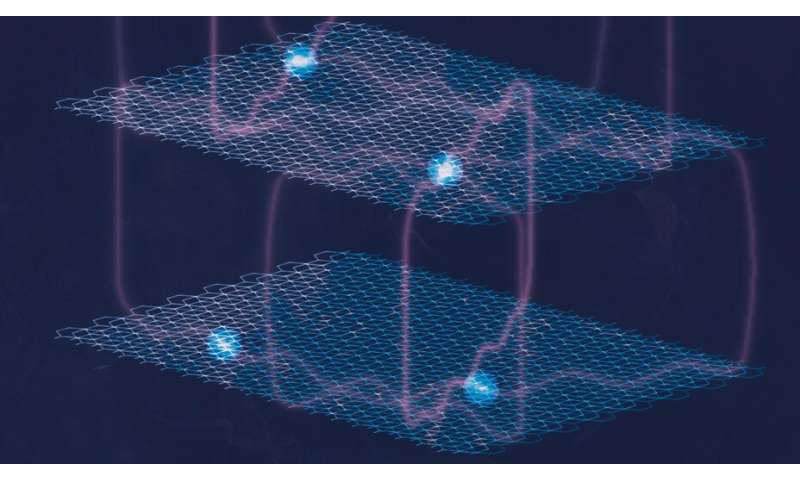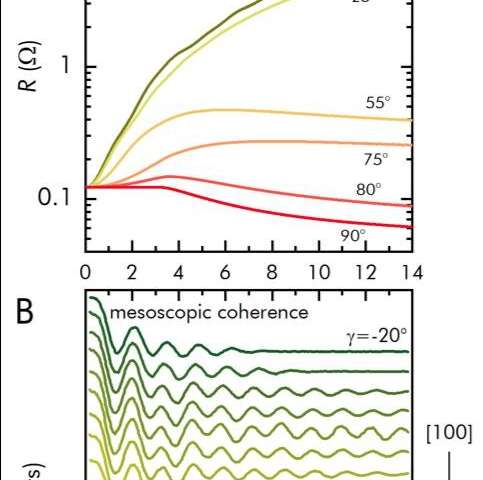#Quantum effect observed in ‘large’ metal
“#Quantum effect observed in ‘large’ metal”

In the world of materials science, sometimes main discoveries can be found in unexpected places. While working on the resistivity of a type of delafossite—PdCoO2—researchers at EPFL’s Laboratory of Quantum Materials discovered that the electrons in their sample did not behave entirely as expected. When a magnetic field was applied, the electrons retained signatures of their wave-like nature, which could be observed even under relatively high temperature conditions and appeared in relatively large sizes. These surprising results, obtained in collaboration with several research institutions, could prove useful, for example in the quest for quantum computing. The research will be published today in the prestigious journal Science.
To grasp the significance of this discovery, we need to imagine ourselves on the tiny scale of atoms. At that scale, we see that metals—even though we normally think of them as quite dense—actually consist of a great many empty spaces around the atoms. When electrons move in these interstitial spaces, they have a twofold nature, behaving both as particles and as waves. Usually their movements in a metal wire are captured well by their particle-like aspects, since their wave-like nature is far too faint and masked by various other interactions. Only under highly specific laboratory conditions, particularly at very low temperatures, experiments by Richard Webb and coworkers had famously uncovered the wave character of electrons in metals.
The sample studied was PdCoO2, whose electronic structure is nearly two-dimensional and extremely pure, and which is used as a catalyst in chemistry. The researchers were surprised to observe a new type of oscillations that exhibited significant coherence lengths when the sample was subject to a magnetic field. This coherence is important when trying to preserve quantum states and the conditions under which it occurred should not have been possible under the basic principles of physics. In this case, they were noted at temperatures up to 60 Kelvin and at length scales of up to 12 microns.

“It is gigantic!”
“This is truly surprising,” says Philip Moll, who heads EPFL’s Laboratory of Quantum Materials. “It’s the very first time this quantum effect has been observed in such a large piece of metal. Twelve micrometers may seem small, but for the dimensions of an atom, it is gigantic. This is the length scale of biological life, such as algae and bacteria.”
The next step will be to try and better understand how this phenomenon is possible at this scale. But researchers are already imagining a wealth of possibilities, particularly in the field of quantum computing.
More information:
Carsten Putzke et al. h/e oscillations in interlayer transport of delafossites, Science (2020). DOI: 10.1126/science.aay8413
Quantum effect observed in ‘large’ metal (2020, June 12)
retrieved 12 June 2020
from https://phys.org/news/2020-06-quantum-effect-large-metal.html
This document is subject to copyright. Apart from any fair dealing for the purpose of private study or research, no
part may be reproduced without the written permission. The content is provided for information purposes only.
If you want to read more Like this articles, you can visit our Science category.
if you want to watch Movies or Tv Shows go to Dizi.BuradaBiliyorum.Com for forums sites go to Forum.BuradaBiliyorum.Com



